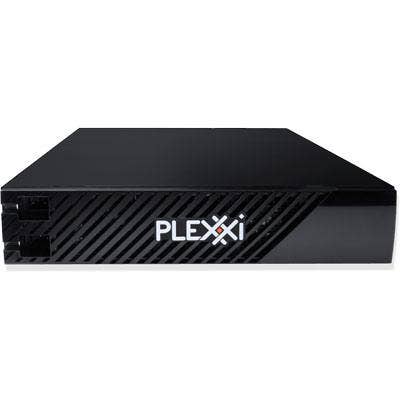HPE Cloud GM Lewis: Plexxi Is Set To Power New Era Of Hyper-converged Infrastructure Composability

Hewlett Packard Enterprise's acquisition of software-defined network fabric provider Plexxi is setting the stage to power a new era of hyper-converged network fabric composability.
Teaming Plexxi with HPE's SimpliVity puts solution providers in the fast lane as the first to be able to capture the "land grab" in the hyper-converged composable infrastructure market, said Ric Lewis, senior vice president and general manager of HPE's Software-Defined and Cloud Group.
"The next wave of hyper-converged infrastructure is around networking," said Lewis in an interview with CRN discussing the May agreement to buy Plexxi. "What we are doing with Plexxi is bringing that composable-type fabric into hyper-converged infrastructure -- all under HPE OneView. The future of hyper-converged is composable."
[RELATED: 2018 HPE Discover Coverage]
Plexxi's self-optimizing nature opens the door to hyper-converged workload optimization under SimpliVity, he said. "As new applications come onto the network, it will figure out within the virtual mesh topology where bandwidth should be dedicated to meet the needs of the application in a dynamic way," said Lewis. "That is really revolutionary."
That's a big opportunity for the channel given that SimpliVity -- which was recently named a leader in the Gartner Magic Quadrant for hyper-converged and has been adopted by 2,600 customers -- is powered by a 100 percent channel model and is growing at four times the market. That channel opportunity also extends to Synergy, HPE's fastest-growing new infrastructure product, with 80 percent of sales coming from partners.
"The simplification and the performance that we are bringing is allowing channel partners to move from just deploying infrastructure to helping customers optimize their environments and transform private cloud environments," said Lewis. "Composable infrastructure is really becoming the de facto choice for a private cloud building block in the industry."
Raymond Tuchman, CEO of Experis Technology Group, a Potomac, Md.-based HPE private cloud powerhouse, said that the Plexxi deal will enable even faster sales growth for SimpliVity, with which the solution provider is experiencing double-digit sales growth.
Experis recently closed two deals with Washington, D.C.-area law firms that are replacing traditional storage/compute environments with SimpliVity, he said. Tuchman credited Lewis with helping to drive an end-to-end software-defined infrastructure platform with multi-cloud capabilities.
"You've got to hand it to Ric and his team," said Tuchman. "No one has a better software-defined portfolio than HPE."
HPE also is extending the Plexxi fabric across the data center in the form of a composable rack solution with Synergy and OneView.
"This fits like a glove with OneView," said Lewis. "When you have this under OneView, you have one-stop shopping where you can flex resources and things optimize on their own. This is a huge thing. No one has a hyper-converged offering that is under one simple management interface."
OneView, which began as a systems configuration tool and then became a network management platform, has been transformed into a dynamic composable infrastructure engine, according to Lewis.
In fact, the first step to software-defined is OneView, which recently reached 1 million licenses.
"OneView is the centerpiece," he said. "It senses what is going on with the infrastructure and allows you to flex those resources toward given workloads. Customers love OneView and they are looking for expertise on it. It has a huge installed base and it works across compute, network fabric and storage. Channel partners are eating this up."
In addition to OneView, HPE's OneSphere SaaS multi-cloud management platform is driving a significant competitive advantage for HPE's hybrid IT charge, said Lewis.
"OneSphere is allowing customers to manage both on- and off-premises with visibility into efficiency of workloads and where they are running and what the costs are," he said. "It provides a view to the line of business and IT on whether the infrastructure is running as efficiently as possible."